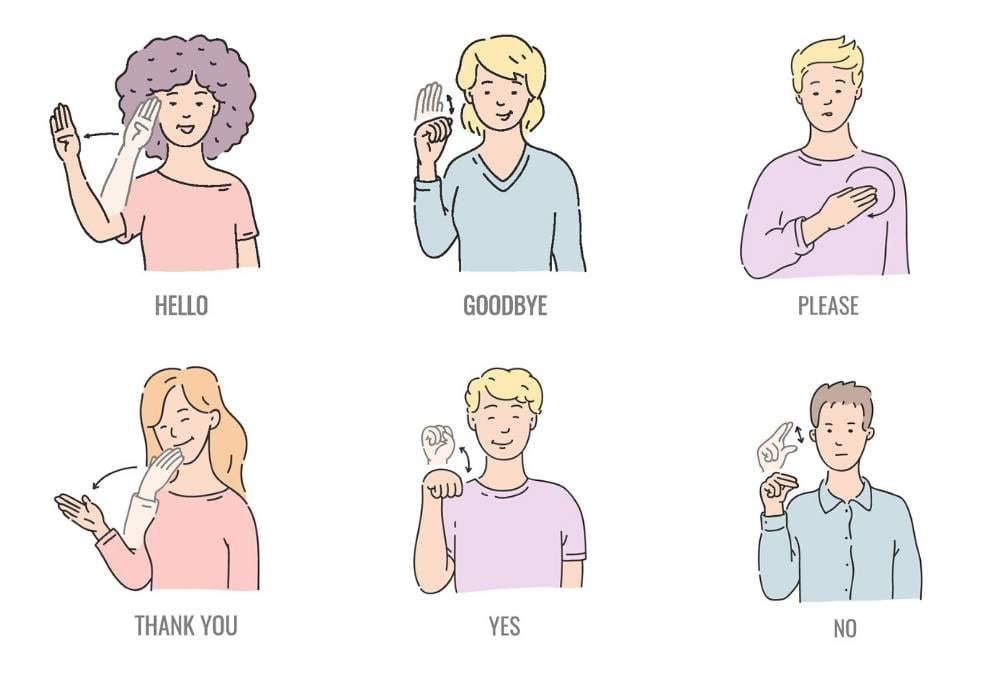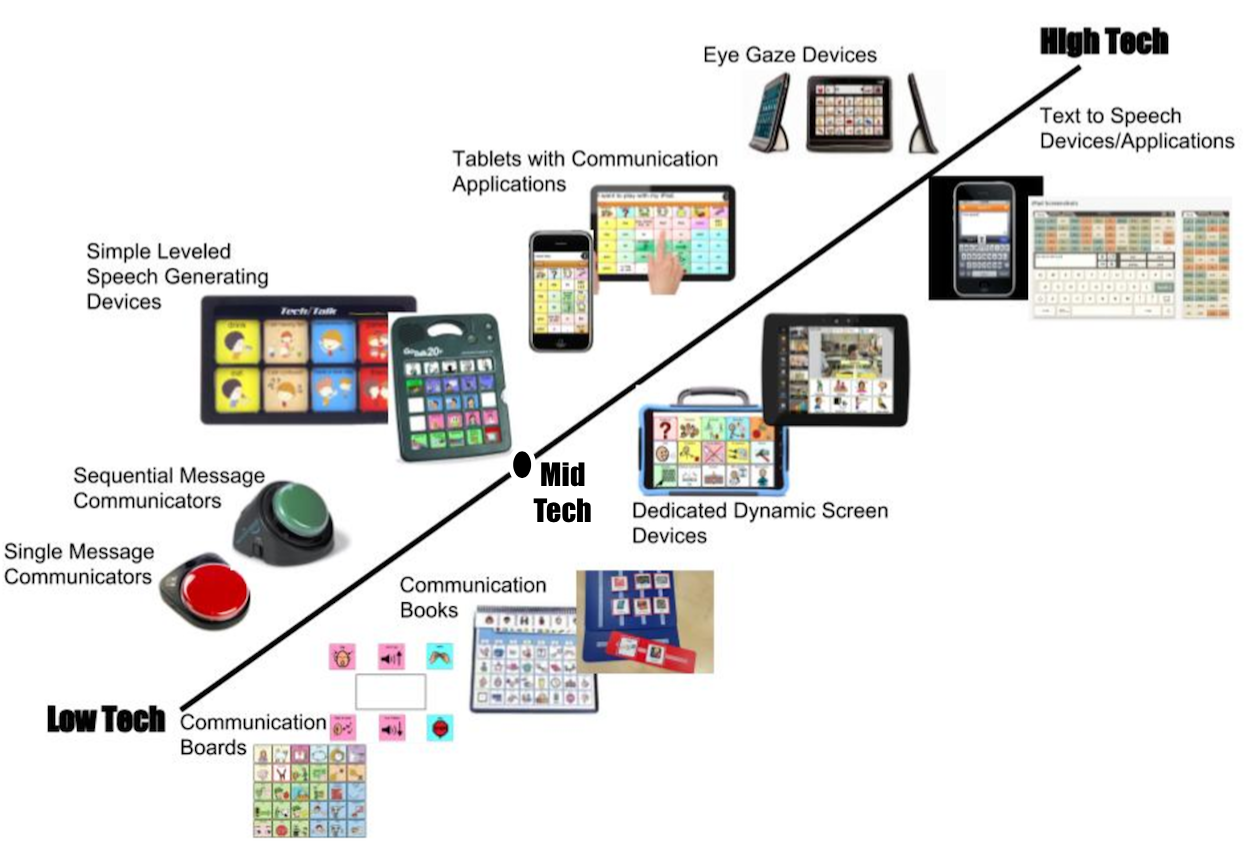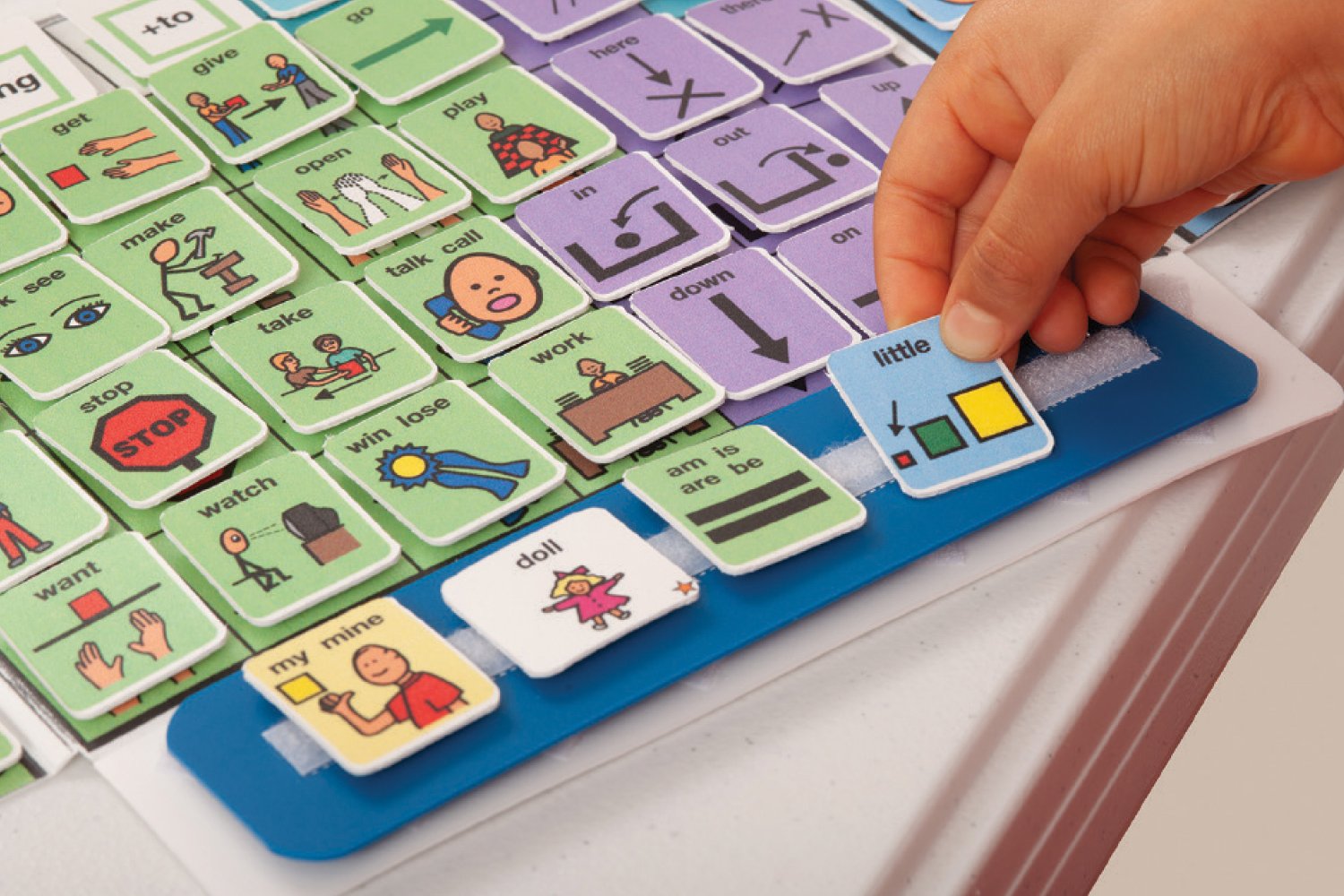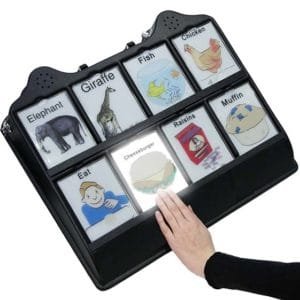Can You Hear Me?
Communication goes far beyond oral speaking. We know this from The Little Mermaid ☺️— “body language”….
There’s actually a variety of ways to communicate in the realm of augmentative and alternative communication (AAC) so let’s learn about some!
They’re categorized by aided and unaided AAC.
Unaided AAC does not require special outside tools or any supplemental materials, because it is based on natural communication such as
-facial expressions
-gestures
-body language
-informal vocalization
-manual sign languages (formal or informal)
image from startasl.com
Kaylee used only long vowel sounds and “m” until about 4 years old.
We tried teaching her sign language but she couldn’t cross midline with her hands and her fine motor skills were (are) impaired making formal sign language impossible. We used real signs as a base and she created her own signs for words. She used primarily an informal version of sign language for years and we still use a few of those in quiet environments lol.
AIDED AAC:
Aided AAC can be low tech (no aural output) or high tech (auoral output communication).
image from slaatt.com
Examples of low tech would be very simple communication books or boards from which the user selects letters, words, phrases, symbols, or images to convey a message. These would be predetermined choices and not adjustable in the moment.
image from northernspeech.com
Kaylee used communication boards in her toddler and preschool aged years. Essentially, a laminated printout of pictures she could recognize that have words written under them.
She couldn’t read but she could memorize the respective phrase with image and point/gesture to the desired one.
We continued to add additional pages and kept them collected with a metal ring.
At times we’ve used a quick access board with a string that Hangs on her wheelchair or around her neck. Ultimately she couldn’t reach or manipulate those for effectiveness.
Aided high tech AAC gives a speech output from a speaker.
The most simplistic version would be a single or sequential message communicator button. These have large surface area. which are good for those with limited range of motion or fine motor skills but can only produce one or a couple of messages that are prerecorded.
A little more variety can be given when using a simple speech generating device. Essentially a board that looks similar to the unaided AAC mentioned prior with images that represent responses but rather than having words for a recipient to read, when a user pushes an image, it would produce a recorded voice.
image from enablingdevices.com
Ok lol to break this down— a speech or communication therapist would work with the caregiver and AAC user to determine phrases that are most frequently used. A person would be selected to record their voice speaking those phrases or words. You may opt to choose a peer of similar age for continuity of sound to development or you may have an adult record.
These can be altered and re-recorded. Some recording boards even have multiple channels so you’re able to switch out the laminated images for double the response availability.
Kaylee made her way through every one of these types of aides over the years. It can take quite a while to experiment and land on an ideal choice and then it may evolve to a new option as the child progresses!
A prevalent AAC device is a tablet or laptop that helps someone with a speech or language impairment to communicate by selecting a preset phrase or spell out their responses with a keyboard. This is called a dedicated dynamic screen (there are several suppliers).
There’s a variety of ways the user can initiate a response.
-finger selection
-eye gaze
-head tracking
-joystick
-single or multiple switch control
image from speechandlanguagekids.com
So regardless of physical ability, even more severely disabled people can utilize a device. The technology is truly impressive!!
Different brands offer different visual setups so the best one is truly dependent on the needs of each individual and arrangement of preferences.
After using multiple types of AAC— modified sign language, gestures, some vocalization, boards, devices— Kaylee has always preferred using her voice. Although most of her speech is unintelligible by others, caregivers who are with her most, can interpret. At times she will just use her iPad to text me what she’s saying if I can’t understand lol.
She has struggled with how long it takes her to communicate using a device due to her fine motor skills.
She wants to communicate much faster than she can build sentences — basically, “she ain’t got time for that”. Lol.
If she does use a device, it is her iPad with an added application.
She loves using her iPad for entertainment, games, texting, and music so why not just keep communication there too?
She uses Proloquo2go, Proloquo4text, and TD Snap AAC.
These are paid apps.
She utilizes an iPad at school with these as well. The school WILL pay for any resources needed in the school environment and provide the device + maintenance— So advocate for that!!
You can also have a device mounted onto a wheelchair or stationary seat.
You want an AAC user to have it available at all times so these positioning methods can help with that.
HOW DO I GET ONE?
The first step for getting communication needs set up is to have a consult with a Speech Language Pathologist. The therapist may refer you to an Assistive Technology specialist for evaluation or they may complete it themselves.
Multiple devices can be tested out when using an office specializing in assistive technology so it’s worth it in my opinion to have the separate consult.
Occupational therapy may be involved, when necessary, to determine the appropriate option when fine motor skills are a concern.
Ultimately, finding how your child communicates best is the goal and having a team of providers who supports the abilities and desires of you and your child is so important.
Whatever variation of communication your child uses, the most important part is LISTENING— WATCHING—UNDERSTANDING
Your child has things to say and needs to convey. The conduit of delivery is only part of the communication exchange.





